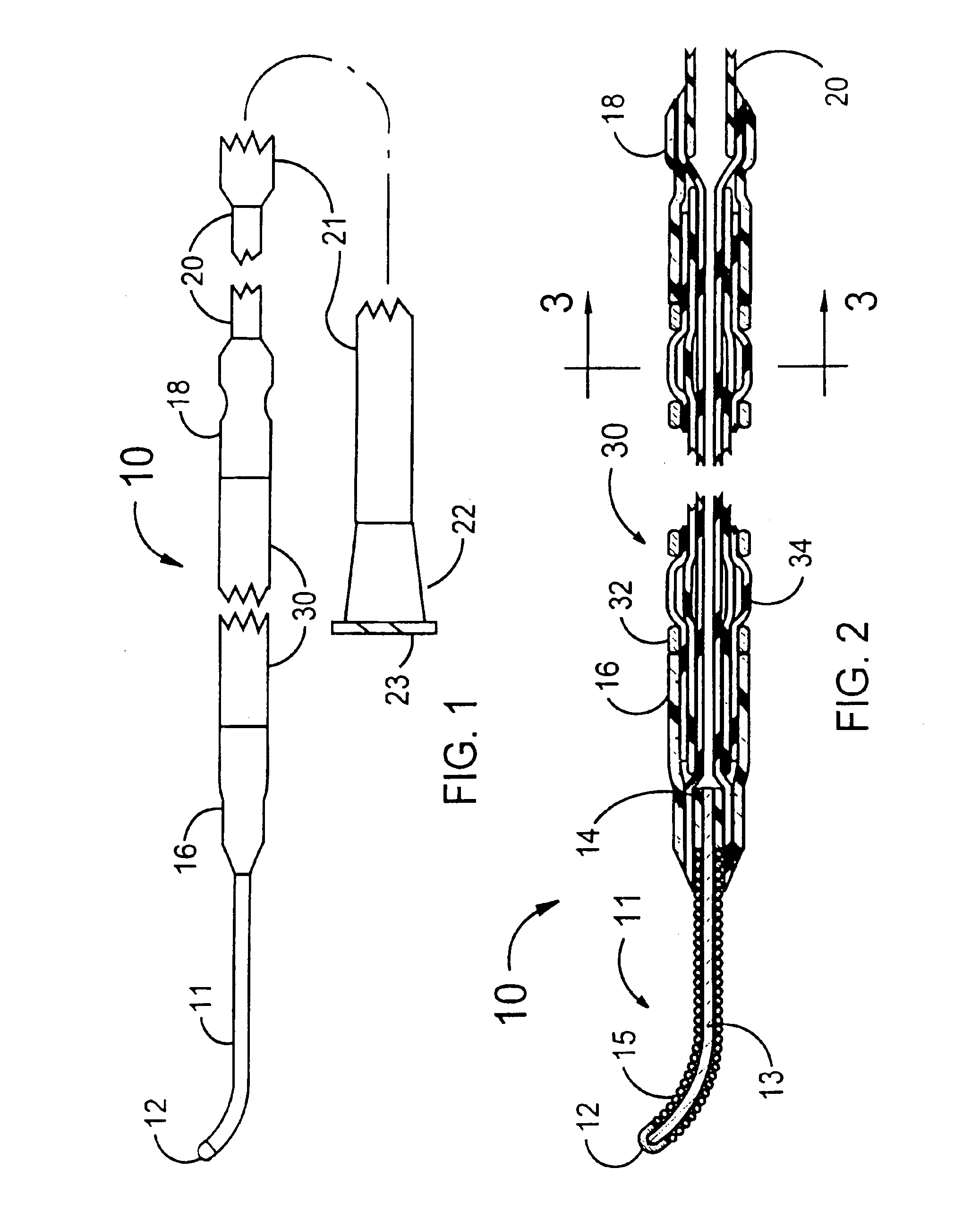Stent delivery system having a fixed guidewire
a technology of a guidewire and a fixed wire, which is applied in the field of stent delivery systems having a fixed guidewire, can solve the problems of additional procedure time for placing the guidewire, and achieve the effects of saving the cost of the guidewire, and reducing the probability of any kinking of the core wir
- Summary
- Abstract
- Description
- Claims
- Application Information
AI Technical Summary
Benefits of technology
Problems solved by technology
Method used
Image
Examples
Embodiment Construction
[0027]FIGS. 1 and 2 illustrate a stent delivery system 10 having a fixed guidewire 11 that is fixedly attached to the distal end of a balloon angioplasty catheter that has a minimum profile for the distal section of the balloon angioplasty catheter. The distal section of the stent delivery system 10 includes a guidewire 11, a proximal elastic band 18, a stent-on-balloon section 30 and a distal elastic band 16. The stent-on-balloon section 30 includes an inflatable balloon 34 onto which a balloon expandable stent 32 is co-axially mounted. A cylindrically shaped distal section of the balloon 34 is fixedly attached to a proximal section of the guidewire 11 that includes a plastic cylinder 14 that is fixedly attached to a central core wire 13 of the guidewire 11.
[0028]A helical wire coil 15 is wrapped around the core wire 13 for most of the length of the core wire 13. The outside diameter of the guidewire 11 would typically be 0.014 inches. However, outside diameters between 0.008 and 0...
PUM
 Login to View More
Login to View More Abstract
Description
Claims
Application Information
 Login to View More
Login to View More - R&D
- Intellectual Property
- Life Sciences
- Materials
- Tech Scout
- Unparalleled Data Quality
- Higher Quality Content
- 60% Fewer Hallucinations
Browse by: Latest US Patents, China's latest patents, Technical Efficacy Thesaurus, Application Domain, Technology Topic, Popular Technical Reports.
© 2025 PatSnap. All rights reserved.Legal|Privacy policy|Modern Slavery Act Transparency Statement|Sitemap|About US| Contact US: help@patsnap.com



